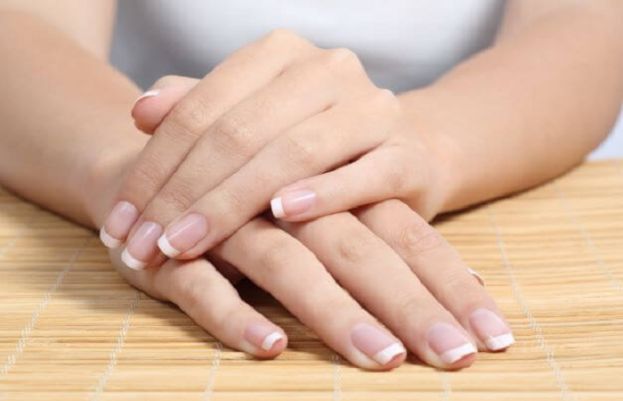Your nails can say a lot about your health

Healthy nails are strong, smooth and pink. Abnormalities such as discoloration, thickening, softening, ridging, pitting and splitting may be signs of underlying health conditions.
Changes in your nails don’t always indicate a serious health issue, but you may want to mention them to your primary care provider at your annual health exam, says UH certified nurse practitioner Michelle Twombly, CNP.
Here’s what she says to look for:
Discoloration
Yellow nails can have many causes. It may be a sign of a fungal infection, which also can lead to thickening and crumbling. Yellow nails also can be a symptom of more serious health problems, including thyroid conditions, liver disease, congestive heart failure, lung disease, diabetes and rheumatoid arthritis.
Pale nails could indicate anemia or heart failure.
Dark lines beneath the nail sometimes result from injury, but also may be a sign of melanoma, a serious type of skin cancer.
Blue nails may signal a lack of oxygen caused by heart disease or any number of conditions.
White streaks or spots, known as leukonychia, is often caused by medications or disease. Sometimes zinc deficiency will cause white spots, but the spots may be harmless.
One type of leukonychia is called Terry’s nails. Most of the nail appears white, except for a narrow pink band at the tip. It could be a sign of a serious condition, such as liver disease, kidney failure, congestive heart failure or diabetes.
Splitting or Cracking
This may result from a fungal infection or thyroid disease. Sometimes nail polish, polish remover or household cleaners will contribute to splitting or cracking.
Hypothyroidism – a condition where the thyroid gland doesn’t produce enough hormones – can cause various nail problems.
Pitted Nails
Small depressions in your nails are often related to psoriasis, a condition that causes scaly skin patches. Pitting may also be a sign of alopecia, an autoimmune disease that causes hair loss. Sometimes the nail will also crumble.
Beau’s Lines
These are grooves that run across the nail. It could be caused by high fever, stress, diabetes or vascular disease. It’s also a possible effect of chemotherapy, nutritional deficiency, injury, psoriasis, eczema or infection.
Thin or Soft Nails
Exposure to chemicals, detergents or nail polish remover; deficiencies in B vitamins, calcium or iron can cause nails to become soft or thin.
Nail Clubbing
Characterized by nails that curve around enlarged fingertips. It could indicate low oxygen in the blood and has been associated with lung disease, cardiovascular disease, inflammatory bowel disease and liver disease.
via Original Source
Comments
Post a Comment